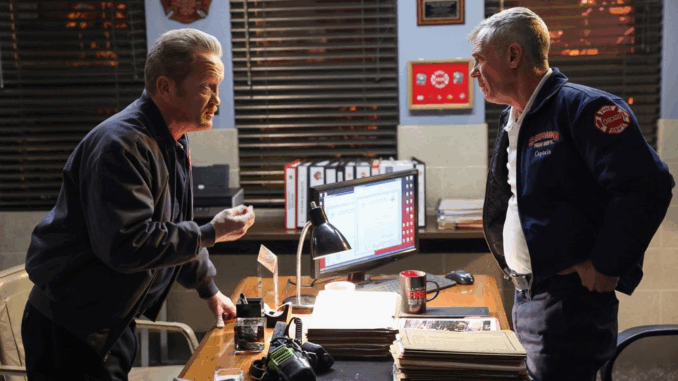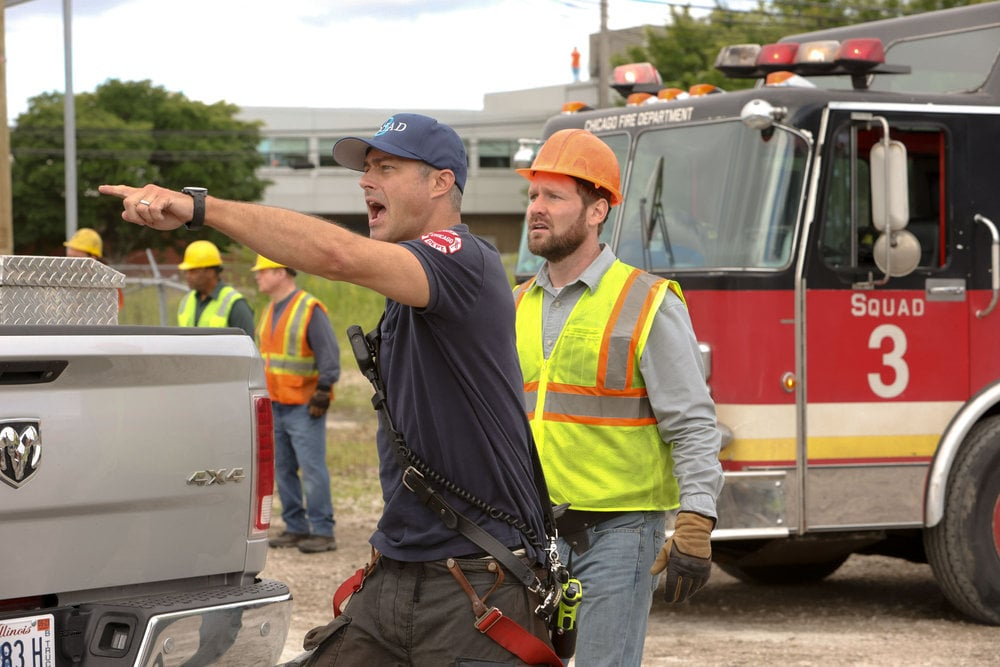
In Episode 14 of Chicago Fire Season 13, titled “Bar Time,” the past sneaks up on more than one member of Firehouse 51, bringing emotional weight and moral dilemmas along with it. This character-driven installment artfully blends personal reckoning, hidden truths, and the harsh realities of leadership.
Novak’s Past Reemerges on a Midnight Call
An Unexpected Passenger Brings Tension to Ambo 61
The central storyline kicks off when Paramedic Lyla Novak receives an unannounced visit from a former close friend—Nina—who asks to tag along for a late-night ride-along. Novak, hesitant but ultimately agreeable, lets her on board for the night shift, despite Violet’s obvious discomfort.
When Ambo 61 responds to a late-night overdose call at a dive bar, it becomes clear that Nina is hiding more than she let on. She recognizes the victim—her estranged brother, who she claims she hasn’t spoken to in years. Novak is torn between duty and emotion as she treats the man, only to later discover Nina was directly involved in the night’s events.
This subplot challenges Novak’s resolve and her growing partnership with Violet. It raises questions about trust, boundaries, and the weight of past relationships that refuse to stay buried.
Herrmann Is Drowning in Paperwork
The Ugly Side of Promotion
Meanwhile, Chief Boden delegates a mountain of administrative work to Christopher Herrmann—firefighter evaluations, training records, and incident reports. Though Herrmann is a natural leader, he struggles to find time for both his firefighting responsibilities and his new administrative duties.
Through moments of stress-induced irritation and dry humor, the episode portrays Herrmann’s balancing act with realism and warmth. A scene where he accidentally drops a stack of personnel files into a puddle outside Molly’s is both comedic and symbolic of his current chaos.
But Herrmann ultimately rallies, enlisting Kylie’s help to digitize and organize the mess. It’s a quiet reminder that even the most seasoned veterans need support, and leadership isn’t always heroic—it’s often tedious and thankless.
Violet Confronts Carver’s Lie
A Crack in the Brotherhood?

Violet, who’s already frustrated with Novak’s secretive behavior, uncovers something troubling about firefighter Sam Carver. During a call earlier in the week, Carver reportedly went off book to rescue a trapped tenant from an illegal sub-basement. The incident report, however, omits this completely.
When Violet calls him out privately, Carver shrugs it off as “just another save.” But Violet sees something else—a pattern of reckless behavior masked as heroism. Their conversation is quiet but intense, hinting at future tensions between the two.
This brief but potent moment reinforces a major theme of the season: that every hero has limits—and blind spots.
Molly’s Still Has Its Magic
End-of-Shift Drinks and Emotional Resolution
As usual, the episode ends with the team gathered at Molly’s. Novak and Violet reconcile, at least for the night, after Novak acknowledges that her past can no longer interfere with her work or relationships. Herrmann, now in a better mood, shares a drink with Severide and Kidd and jokes that he might start delegating his paperwork to Boden himself.
The lighthearted tone at the end offers emotional balance to a story heavy on regret, responsibility, and internal conflict. Chicago Fire always finds a way to remind us: in between the flames, it’s the quiet moments that heal.
Character Spotlights
-
Lyla Novak: Grapples with emotional baggage and learns to draw boundaries when personal life threatens her professional role.
-
Christopher Herrmann: Struggles with administrative overload but finds clarity and balance with help from Kylie.
-
Violet Mikami: Acts as the moral compass of the episode, refusing to let deception slide even among friends.
-
Sam Carver: His actions raise red flags, hinting at deeper issues under his confident façade.
“Bar Time” is a thoughtful, nuanced episode that demonstrates the power of quiet conflict. While there are fewer firehouse calls, the emotional intensity runs high, proving that the real heat often comes from within.
